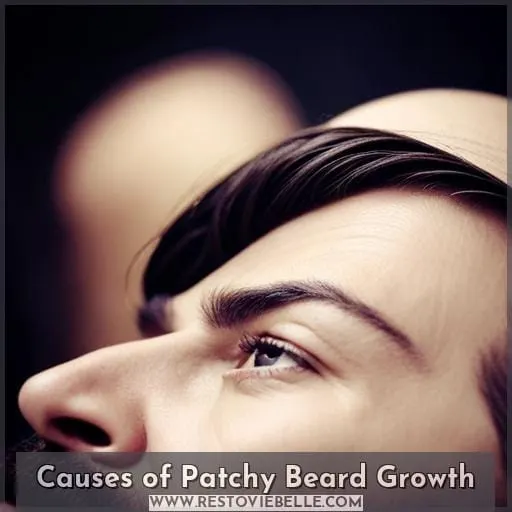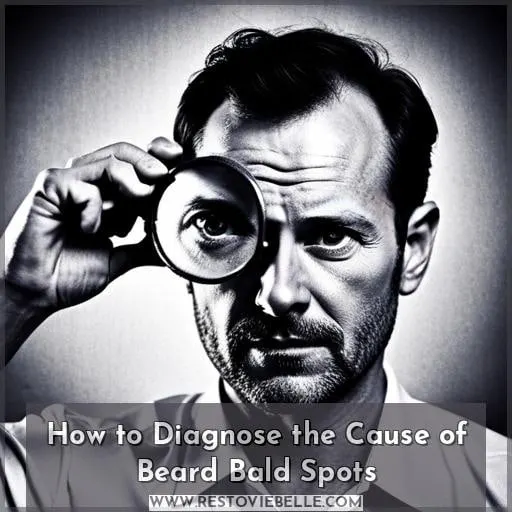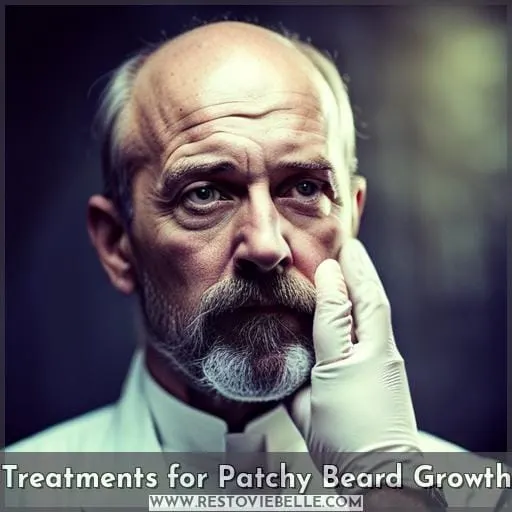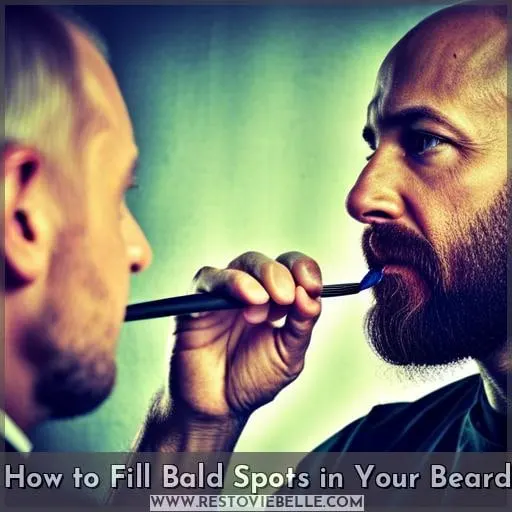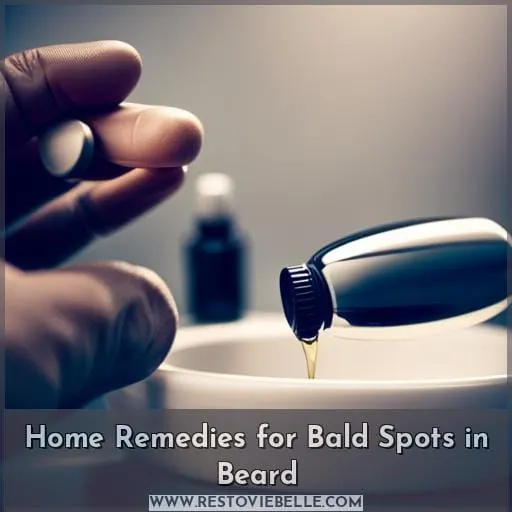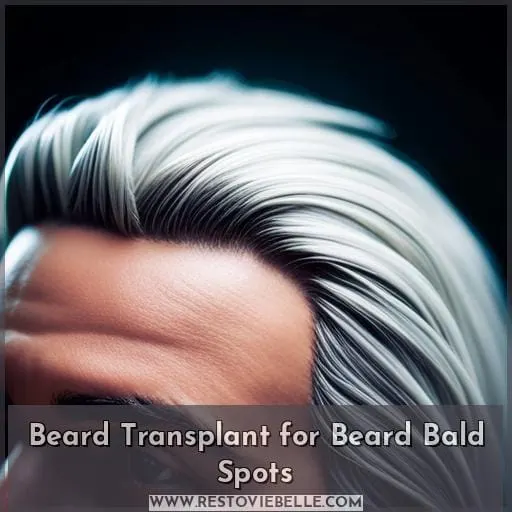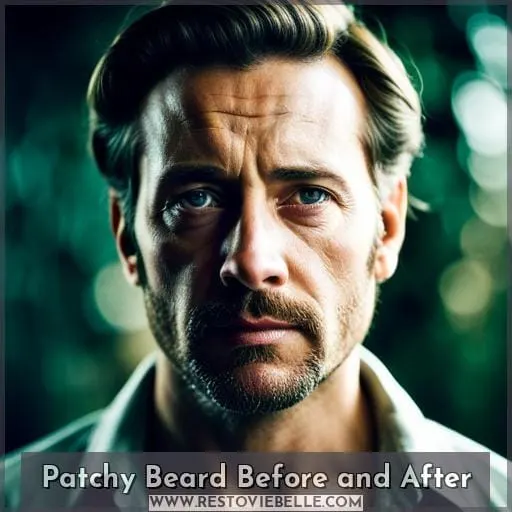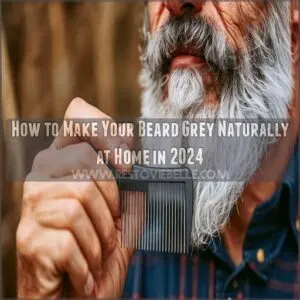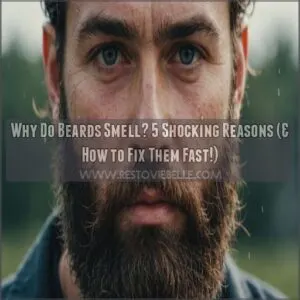This site is supported by our readers. We may earn a commission, at no cost to you, if you purchase through links.
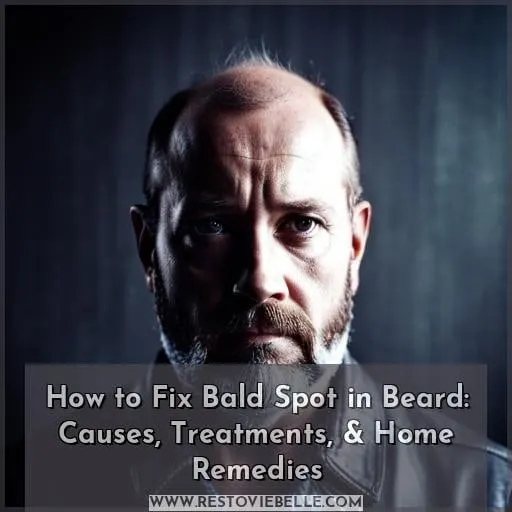 Got a bald spot in your beard? You’re not alone. There are many causes, from genetics to medical conditions.
Got a bald spot in your beard? You’re not alone. There are many causes, from genetics to medical conditions.
Causes of a Bald Spot in Your Beard
- Genetics
- Medical conditions
- Medications
- Lifestyle choices
- Hair styling products
- Traumatic injury
- Infection
- Autoimmune disorders
How to Fix a Bald Spot in Your Beard
- There is no cure for genetic baldness. However, there are treatments that can help to slow down the progression of the condition and improve the appearance of your beard.
- Medical conditions that can cause baldness can often be treated with medication or other therapies.
- If you are taking medication that is causing hair loss, talk to your doctor about switching to a different medication or reducing your dosage.
- Avoiding certain lifestyle choices, such as smoking and excessive sun exposure, can help to prevent or slow down the progression of hair loss.
- Using hair styling products that are designed for beards can help to protect your hair from damage and keep it looking its best.
- If you have a traumatic injury to your beard, it is important to seek medical attention immediately.
- If you have an infection in your beard, it is important to treat the infection with antibiotics.
- Autoimmune disorders that can cause hair loss are often treated with medications that suppress the immune system.
Table Of Contents
- Key Takeaways
- Causes of Patchy Beard Growth
- How to Diagnose the Cause of Beard Bald Spots
- Treatments for Patchy Beard Growth
- How to Fill Bald Spots in Your Beard
- Home Remedies for Bald Spots in Beard
- Beard Transplant for Beard Bald Spots
- Patchy Beard Before and After
- Will a Patchy Beard Eventually Fill In?
- Frequently Asked Questions (FAQs)
- Conclusion
Key Takeaways
- There is no cure for genetic hair loss.
- Avoid pseudo-fixes, such as biotin supplements and minoxidil oils.
- Opt for natural solutions, such as products with essential oils.
- The length of time it takes for a patchy beard to fill in can vary depending on factors such as genetics, age, and overall hair growth rate.
Causes of Patchy Beard Growth
There are a few different reasons why you might be experiencing patchy beard growth.
- Alopecia barbae
- Lack of natural growth
- Other causes like sleep deprivation, medication, and fungal infections.
Let’s delve into each of these in more detail.
Alopecia barbae
Alopecia barbae is a type of hair loss that affects the beard area. It can be caused by a number of factors, including:
- Stress
- Triggers
- An autoimmune condition
Treatments for alopecia barbae include:
- Medications
- Home remedies
- Beard transplants
– Lack of natural growth
Sparse, patchy beard growth usually occurs as a result of hormones.
DHT is the hormone that causes male pattern baldness, but it also stimulates beard growth.
So, if you have low levels of DHT, you may not grow a full beard.
– Other causes
Besides lack of natural growth and alopecia barbae, other causes of patchy beard growth include:
- Stress
- Fungal infections
- Medications
- Thyroid disease
- Vitamin D deficiency
- Poor nutrition
How to Diagnose the Cause of Beard Bald Spots
Patchy beard growth can be caused by a number of factors, including:
- Lack of natural growth
- Alopecia barbae
- Other causes
To determine the cause of your beard bald spots, you can check the symptoms surrounding your condition, such as:
- Whether the hair loss is sudden or gradual
- Whether you have any other symptoms such as a rash or itching
You can also talk to your doctor or dermatologist to get a diagnosis.
Treatments for Patchy Beard Growth
Once you have diagnosed the cause of your patchy beard growth, you can start exploring treatment options.
| Treatment | Alopecia Barbae | Lack of Natural Growth | Other Causes |
|---|---|---|---|
| Minoxidil | Yes | Yes | No |
| Platelet-rich plasma therapy | Yes | No | No |
| Low laser light treatment | Yes | No | No |
| Corticosteroids | Yes | No | No |
| Minoxidil | Yes | No | No |
| Vitamin E supplements | Yes | Yes | Yes |
| Treat the underlying cause | Yes | No | Yes |
How to Fill Bald Spots in Your Beard
There are a number of ways to fill in bald spots in your beard, including hair fibres, hair thickening spray, and beard micropigmentation.
- Hair fibres are tiny strands of hair that are applied to the beard with a brush. They can help to create the illusion of a fuller beard.
- Hair thickening spray is a liquid that’s applied to the beard. It helps to thicken the hair and make it appear fuller.
- Beard micropigmentation is a cosmetic procedure that involves injecting tiny dots of pigment into the skin of the beard. It can create the illusion of a fuller beard.
Avoid pseudo-fixes, like biotin supplements and minoxidil oils. Opt for natural solutions, like products with essential oils.
Patchy beards are nothing to be ashamed of. With the right care and products, you can rock yours with confidence.
Home Remedies for Bald Spots in Beard
Try these home remedies to help fill in bald spots in your beard if you’re not ready for a beard transplant.
- Garlic:
- Crush a clove of garlic and mix it with coconut oil.
- Apply the mixture to the bald spot and leave it on for 30 minutes.
- Rinse with warm water.
- Viviscal:
- This supplement contains a blend of vitamins and minerals that are said to promote hair growth.
- Take 2 capsules per day, as directed on the label.
- Zinc and biotin:
- These two nutrients are essential for healthy hair growth.
- You can get them from your diet or by taking supplements.
- Essential oils:
- Some essential oils, such as rosemary, peppermint, and lavender, are said to help stimulate hair growth.
- Dilute a few drops of essential oil in a carrier oil, such as coconut oil or jojoba oil, and massage it into the bald spot.
- Aloe vera:
- Aloe vera is a natural moisturizer that can help to improve the condition of your hair and scalp.
- Apply aloe vera gel to the bald spot and leave it on for 30 minutes.
- Rinse with warm water.
Beard Transplant for Beard Bald Spots
Beard transplants are an extremely effective way to treat beard bald patches, but only appropriate for some hair loss patients.
If you have naturally patchy beards or alopecia areata, beard transplants won’t be able to help you.
Beard transplants are also expensive, time-consuming, and can involve some risks, such as scarring and infection.
The success rates of beard transplants vary, but most patients see a significant improvement in the appearance of their beard.
Patchy Beard Before and After
With the right care and products, you can help your patchy beard fill in over time.
- Let your beard grow naturally for at least a month, and choose the best beard style for your face shape.
- Get the right products to help your beard grow thicker and healthier.
- Avoid pseudo-fixes, like biotin supplements and minoxidil oils.
- Opt for natural solutions, like products with essential oils.
Your patchy beard will eventually fill in, but it takes time and patience.
Will a Patchy Beard Eventually Fill In?
While a patchy beard may not completely fill in on its own, there are many ways to help improve its appearance.
The length of time it takes for a patchy beard to fill in can vary depending on factors such as genetics, age, and overall hair growth rate. Some men may see improvement within weeks or months, while others may require more patience and time.
It’s important to understand that the ability for your patchy beard to eventually fill in is largely determined by your individual genetics. Some men naturally have thicker and fuller beards than others due to genetic predispositions.
Age also plays a role as facial hair tends to become thicker and denser with maturity.
However, don’t lose hope! There are steps you can take to promote healthy beard growth and potentially encourage those bald spots to gradually disappear over time.
Consistent grooming practices like regular washing with gentle cleansers can keep the skin underneath clean and free from any potential obstacles that could hinder hair growth.
Additionally, maintaining good overall health through proper dieting habits (including essential vitamins) along with exercise helps support optimal conditions for healthy hair follicles which contribute towards filling up those patches eventually.
Remember though – it’s crucially important not only have realistic expectations but maintain patience throughout this process since everyone’s journey is unique!
Frequently Asked Questions (FAQs)
What is the difference between patchy beard growth and alopecia barbae?
Patchy beard growth is usually caused by hormones, while alopecia barbae is an autoimmune condition that can cause bald patches on your beard and other parts of your body.
What are the signs and symptoms of alopecia barbae?
You’ve got small, round bald patches on your beard. Itchy, painful skin and white hairs around the edges.
You might’ve alopecia barbae.
How is alopecia barbae diagnosed?
Alopecia barbae can be diagnosed by a doctor or dermatologist by looking at your hair loss and samples of hair under a microscope.
What are the treatments for alopecia barbae?
You can treat alopecia barbae with:
- Corticosteroids
- Minoxidil
- Vitamin E supplements
What are the home remedies for alopecia barbae?
You can try garlic, Viviscal, and zinc and biotin supplements as home remedies for alopecia barbae.
Conclusion
To conclude, if you’re dealing with a bald spot in your beard, there are various causes and treatments to consider.
While genetic baldness may not have a cure, treatments can slow down its progression.
Medical conditions, medications, and lifestyle choices can also contribute to bald spots, but they can often be managed with medication or changes in habits.
In some cases, home remedies or beard transplants can help fill in the bald spots.

